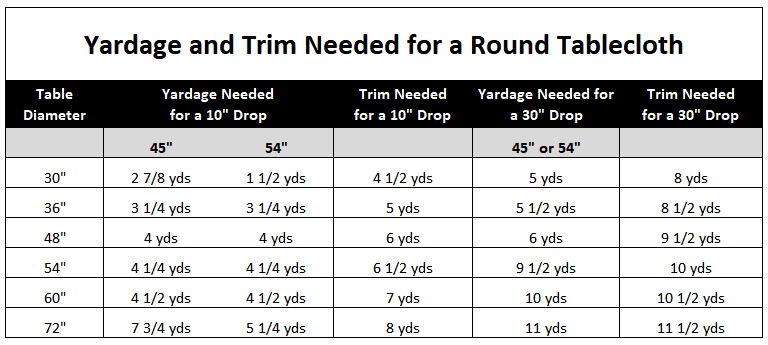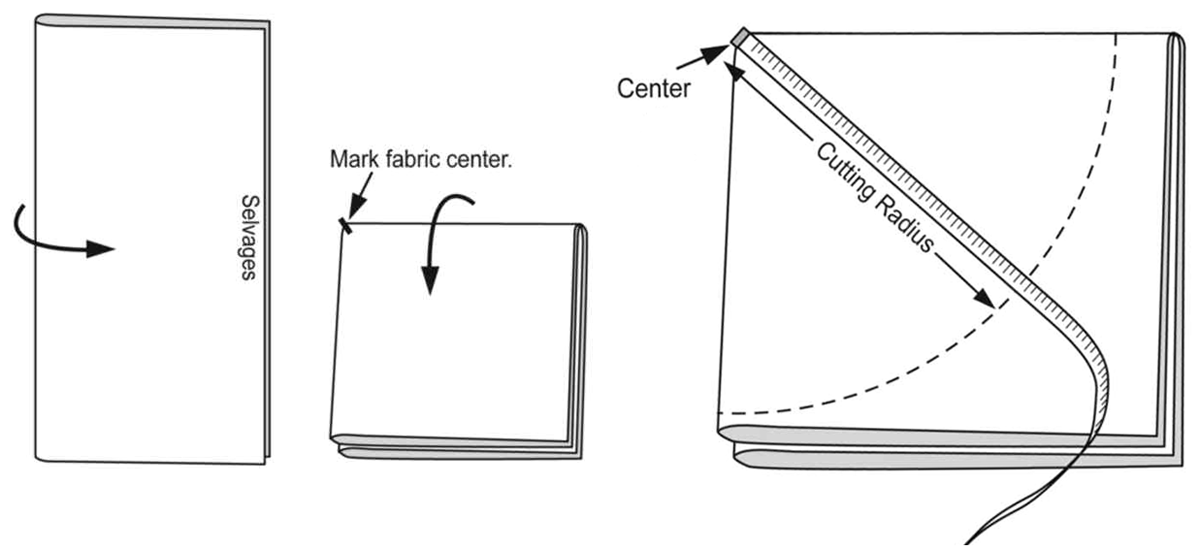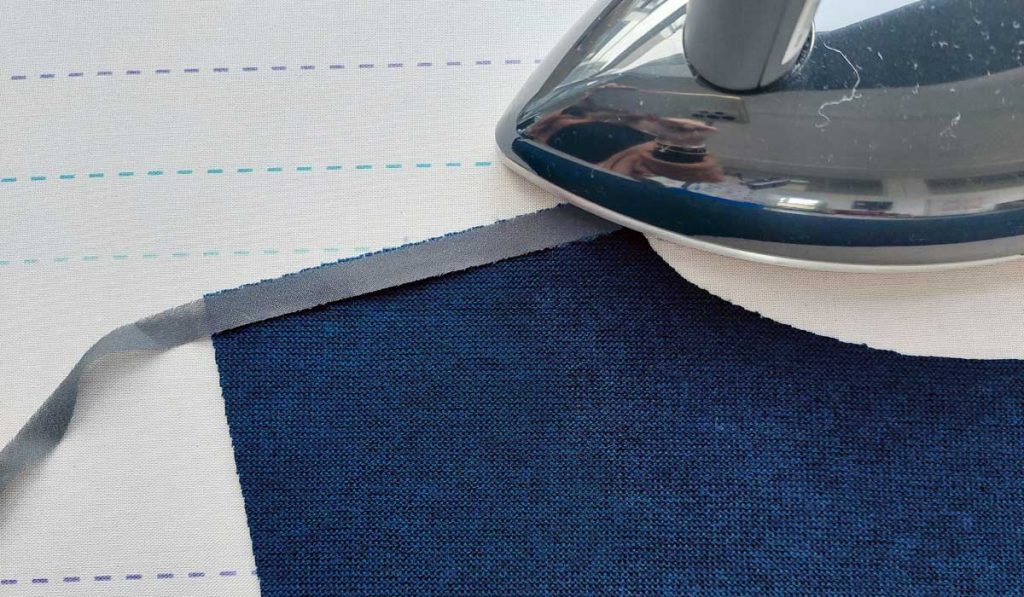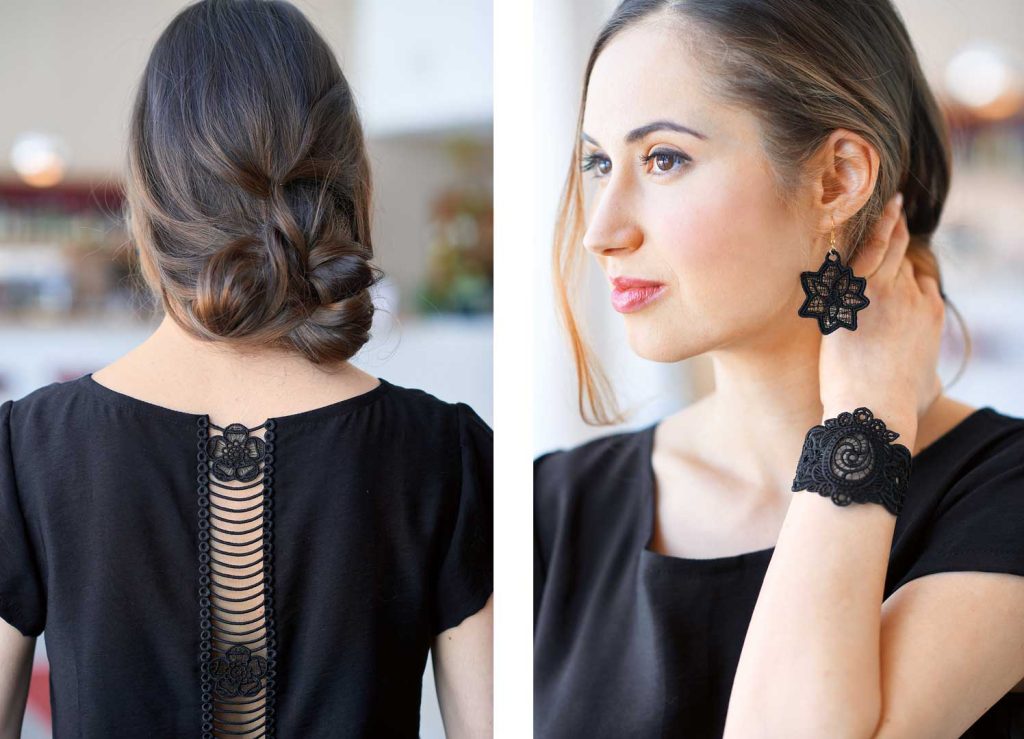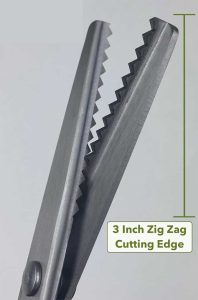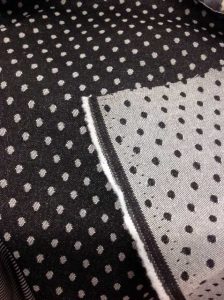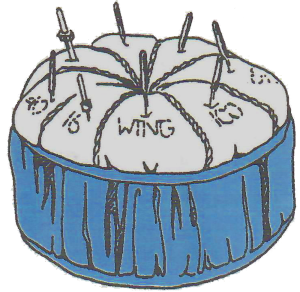To add an easy heirloom look to a child’s dress, use two pre-made, hemstitched linen placemats on the collar and cuffs. Two placemats will provide enough fabric for the collar, cuffs, corded piping, covered buttons, and even a matching headband.
Supplies
- 2 Linen placemats
- Commercial dress pattern with high bodices front and back
- Dress fabric
- Any additional items as noted on pattern
- Your choice of embellishments, if desired
Placemats can be new or reused from placemats found in your closet, thrift stores, or a retail store. To personalize the finished garment, add fabrics, trims, buttons, or embroidery. Your imagination is the only limit to creating a treasured garment, accessory or treasured gift.
Collar
1. Start by cutting out a complete front bodice from the pattern.
2. Clean and starch the placemats, then one of the placemats in half crosswise across the short length. (Figure 1)
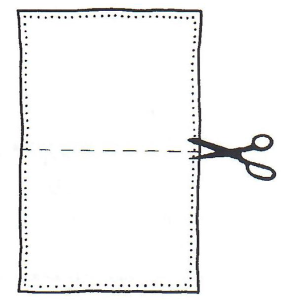
3. To make the collar, pin one of the placemat halves over the front bodice. Adjust the collar length either to show or cover the bodice seam. Trim the placemat along the neck and shoulders. (Figure 2)
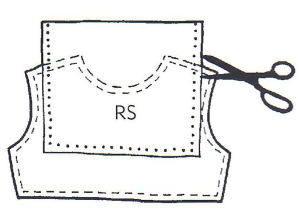
4. Cut the second placemat half in half crosswise in the same manner as the first placemat. (Figure 3)
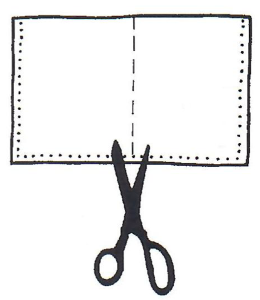
5. Put these two placemat pieces right sides together and pin them to the back bodice, adjusting shoulder width and collar length to match the already cut front collar. Trim placemat pieces along neck, shoulder and, if necessary, the center-back edge. (Figure 4)
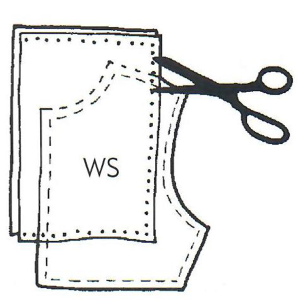
6. French-seam the collar front to the back at the shoulders, pressing seam allowances toward front. Narrowly hem each collar back edge, using the 5/8″ seam allowance.
7. Baste the collar to the bodice neckline, both right sides up, matching center fronts and shoulder seams. The collar neckline will be finished simultaneously with the dress neckline.
Cuffs
8. Fold the cuff pattern along fold line, then fold away seam allowances at short ends. (Figure 5)
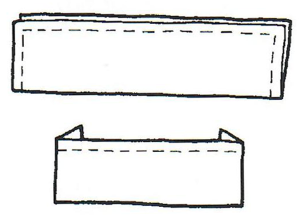
9. Pin the cuff long folded edge to a short end of second placemat, then cut all the way across placemat end. Repeat to cut second cuff across opposite placemat end. (Figure 6)
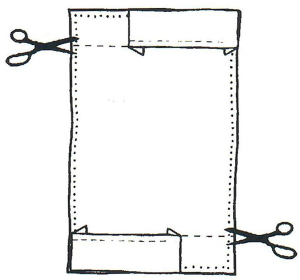
11. If the placemat piece is longer than the cuff pattern, press the extra amount to the wrong side on the cuff’s underlap (button) end. Tack this folded amount or fuse using paper-backed fusible web.
12. Sew each cuff to a prepared sleeve edge. Serge or trim-and-bind this seam allowance since it will be visible.
13. To reinforce a single fabric layer, pin two rectangles under each cuff’s buttonhole area. Sew the buttonholes, then trim interfacing close to the stitching.
~Adapted from an article from Affordable Heirlooms, printed with permission





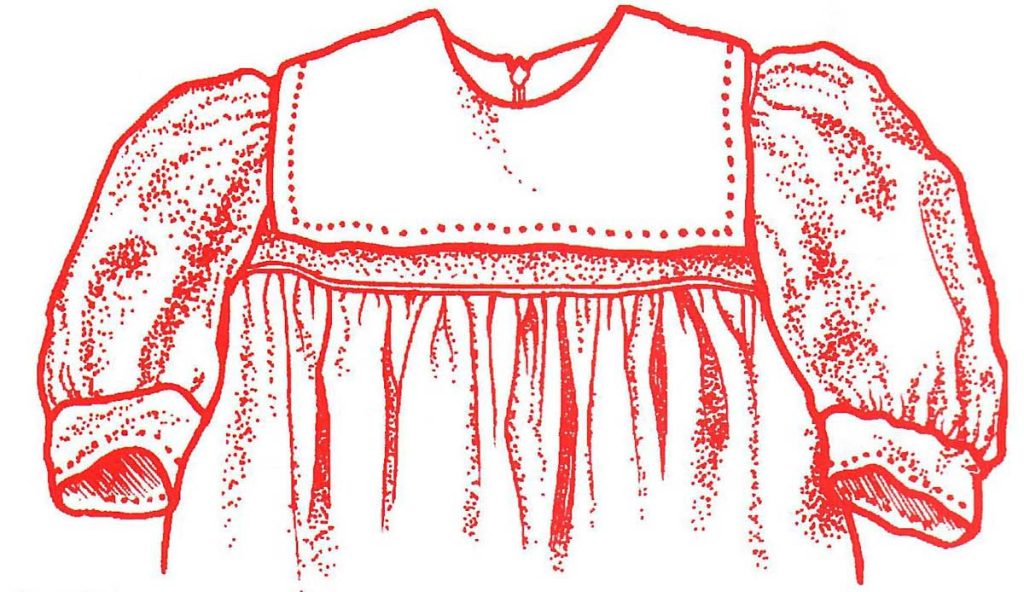
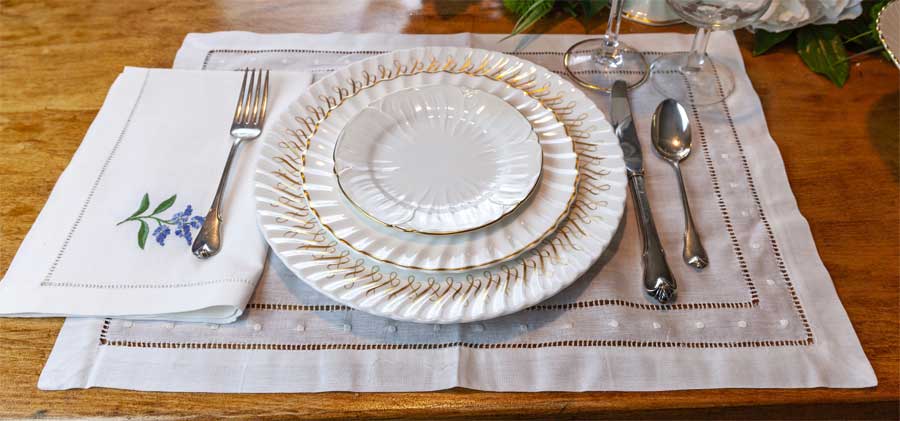
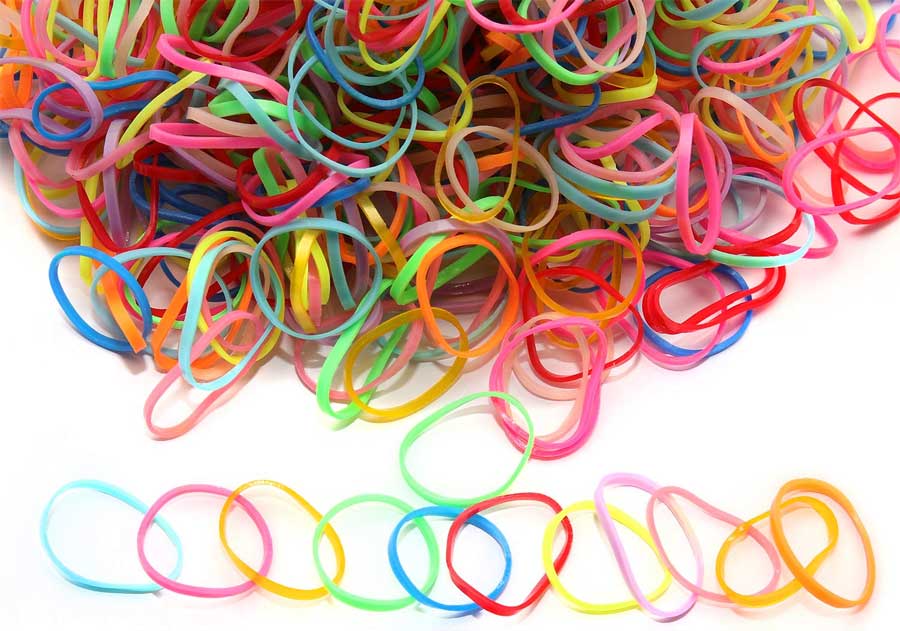
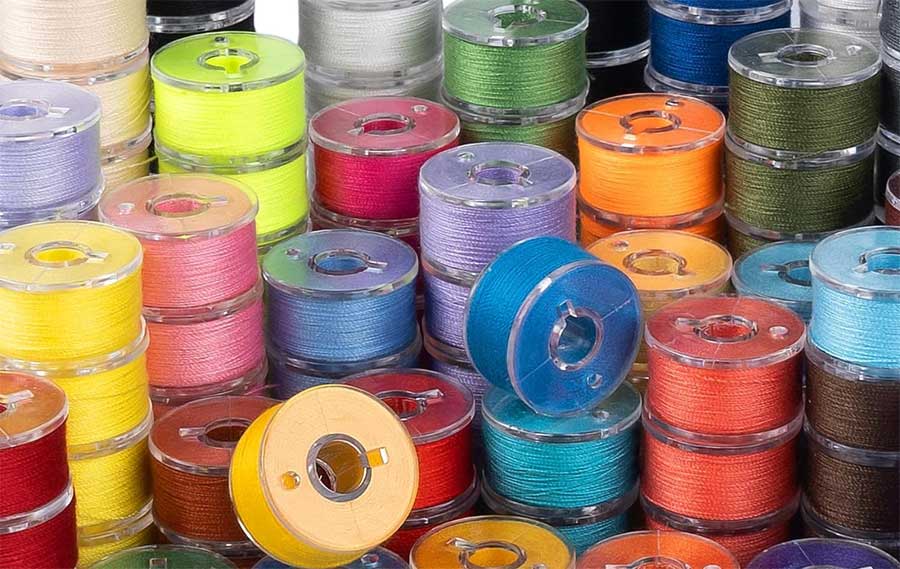
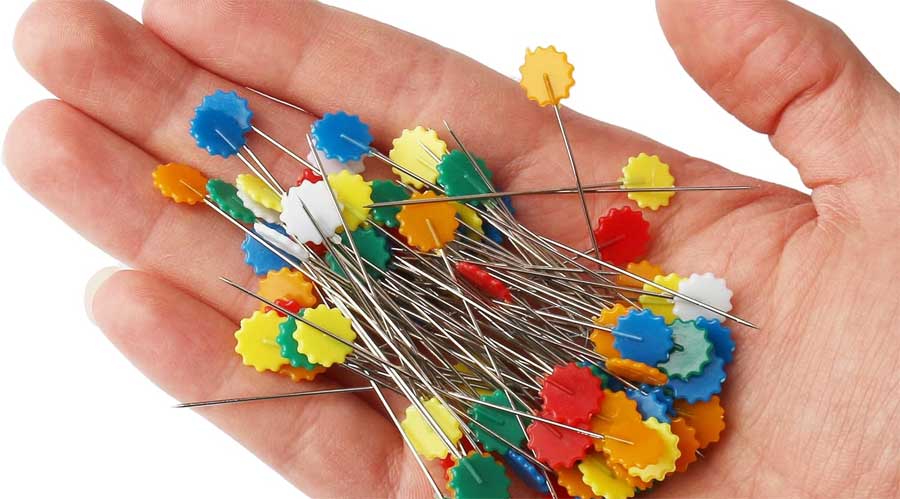

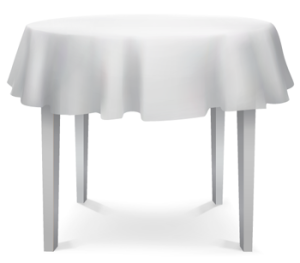 Next, you’ll determine the side drop, which is the measurement from the top of the table to the bottom length for how low you want the tablecloth to hang.
Next, you’ll determine the side drop, which is the measurement from the top of the table to the bottom length for how low you want the tablecloth to hang.